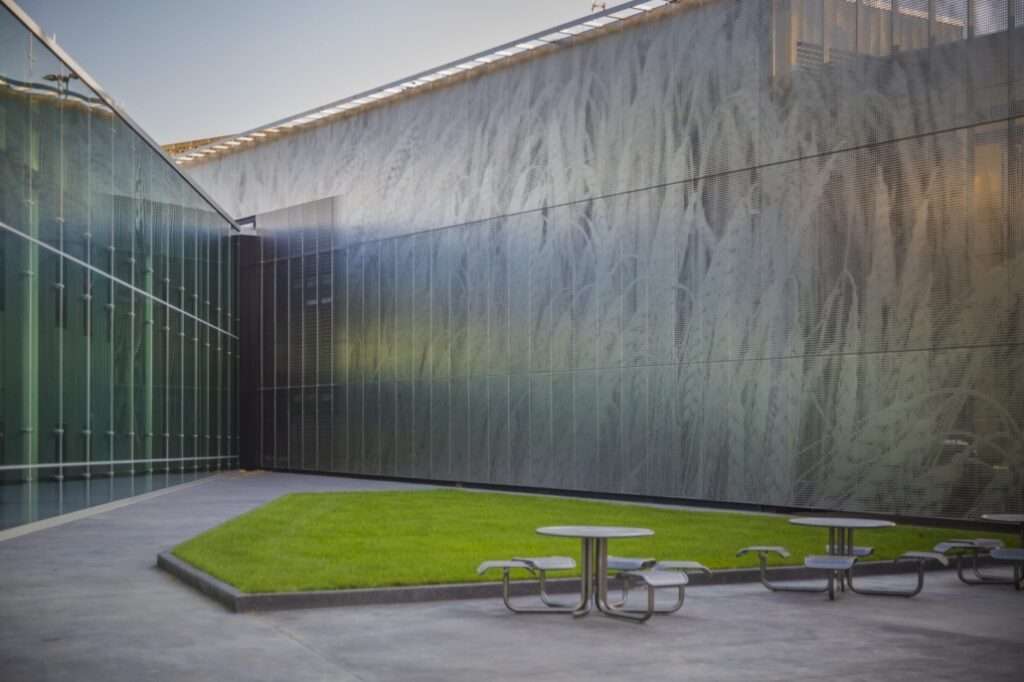Architectural design stands at the forefront of innovation, consistently pushing boundaries to redefine the aesthetics and functionality of structures. Among the materials driving this evolution, Zahner’s perforated wall panels have emerged as a powerful tool for architects seeking to create striking and sustainable designs. These panels not only offer visual appeal through customizable patterns and textures but also contribute to the overall performance of a building by controlling light, airflow, and acoustics. Embracing Zahner’s perforated wall panels allows architects to move beyond conventional limitations and craft truly unique and impactful spaces. The impact of perforated wall panels on modern architecture is undeniable.
The Art and Science of Perforation
The beauty of perforated wall panels lies in their ability to seamlessly blend art and science. The perforation process itself is a precise undertaking, allowing for intricate designs and patterns that would be impossible to achieve through other methods. Beyond aesthetics, the size, shape, and density of the perforations are carefully calibrated to optimize performance.
- Light Control: Perforations can diffuse sunlight, reducing glare and creating softer, more inviting interior spaces.
- Airflow Management: Strategically placed perforations can facilitate natural ventilation, reducing reliance on mechanical systems.
- Acoustic Performance: Perforated panels can absorb sound waves, mitigating noise pollution and improving acoustic comfort.
Zahner: A Leader in Perforated Wall Panel Innovation
Zahner stands out as a leading innovator in the field of perforated wall panels, offering a comprehensive range of materials, finishes, and customization options. Their expertise in engineering and fabrication ensures that each panel meets the highest standards of quality and performance. Zahner’s commitment to sustainability further enhances the appeal of their products, making them a responsible choice for environmentally conscious architects.
Material Choices and Customization
Zahner offers a wide variety of materials for their perforated wall panels, including:
- Stainless Steel
- Aluminum
- Copper
- Titanium
This diverse selection allows architects to select the perfect material to complement their design vision and meet specific project requirements. Furthermore, Zahner’s advanced manufacturing capabilities enable virtually limitless customization options, including custom patterns, textures, and finishes.
Applications in Modern Architecture
Perforated wall panels are increasingly used in a wide range of architectural applications, including:
- Facades: Creating visually stunning and energy-efficient building exteriors.
- Interior Walls: Adding texture, depth, and acoustic control to interior spaces.
- Ceilings: Improving acoustics and providing unique lighting effects.
- Sunshades: Reducing solar heat gain and glare.
The versatility of perforated wall panels makes them a valuable asset for architects seeking to create innovative and sustainable designs.
Comparing Perforated Wall Panels to Traditional Materials
| Feature | Perforated Wall Panels | Traditional Solid Walls |
|---|---|---|
| Light Control | Excellent ⏤ Customizable diffusion | Limited ⏤ Requires windows |
| Airflow | Good ー Potential for natural ventilation | Poor ー Requires mechanical ventilation |
| Acoustics | Good ⏤ Sound absorption properties | Poor ー Reflective surfaces |
| Aesthetics | Highly Customizable ⏤ Wide range of patterns and materials | Limited ⏤ Typically uniform surfaces |
| Sustainability | Excellent ー Potential for recycled materials and energy efficiency | Variable ⏤ Depends on material and construction |

